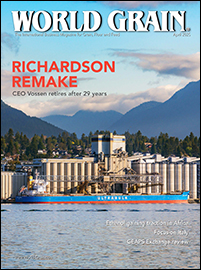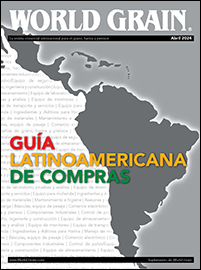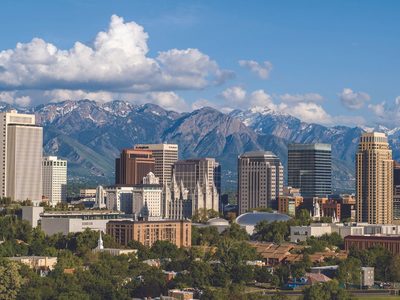Food safety moves to the forefront, forcing agricultural, food agency restructuring
Japan is the world’s largest net-importer of agri-food products, with 2002 agricultural imports totaling U.S.$41.5 billion.
The government has long tried to increase food self-sufficiency, but the efforts consistently flagged, with the self-sufficiency ratio falling by 7 percentage points, to 47%, from 1990 to 2000. Small, inefficient farms and increasing consumer demand for a variety of foods typically hindered the government’s efforts.
Japan’s agricultural sector also has long been highly protected and subsidized, based on its large and powerful agricultural cooperative system. The cooperatives, traditionally have lobbied successfully for the preservation of small farms, high support prices and tariffs on imports.
But in the past few years, Japanese consumers have moved to the top of the government’s agricultural policy agenda.
Traditionally quality conscious, consumers have widened their focus to include intense scrutiny of food safety. The heightened concerns stem from the September 2001 domestic outbreak of bovine spongiform encephalopathy, an avian flu epidemic in poultry flocks and several food mislabeling issues.
To regain consumer confidence, the government has restructured and redefined the roles of various agencies to tighten agricultural and food oversight and control. The efforts culminated in the May 2003 enactment of the Basic Law on Food Safety, which specifies the government and private sector responsibilities for ensuring the safety of food.
The new law’s main feature was establishing a Food Safety Commission, which evaluates food health risks and advises ministries on appropriate countermeasures. This agency — specifically separated from the Ministry of Agriculture, Forestry and Fisheries — was designed to prevent potential regulatory conflicts between the MAFF-focused agricultural and agri-business sectors and consumer interests.
The legislation resulted in some change in the handling of imports, as food safety at every stage of the food supply chain for both domestic and foreign markets must be assured. Although suppliers are not required to follow identical procedures, Japan has increased its scrutiny of imports and in some cases requires additional documentation.
Another key change was the abolition of the Japan Food Agency, long responsible for controlling the supply of rice, wheat and barley through a system of administered prices, tariffs and import quotas. JFA also managed the purchase, quality and safety of imported grains.
In place of the JFA, the government created two new bureaus, the Staple Food Department of the General Food Policy Bureau and the Food Safety and Consumer Affairs Bureau. The former now administers supplies of rice, wheat and barley, while consumer issues, such as labeling and food risk management, are managed by the Food Safety and Consumer Affairs Bureau.
Japan’s parliament in June 2003 also passed legislation mandating implementation of a traceability system for domestic beef as part of its ongoing response to the BSE scare. Full implementation of the domestic program is expected by December 2004. The government also is expected to consider requiring traceability for imported beef.
In recent years, consumers also raised concerns about genetically modified organisms, which prompted the government to introduce GMO safety approval and labeling policies. Japan’s Ministry of Health, Labor and Welfare is responsible for granting GM food safety approvals, and foods found to contain unapproved GM varieties must be re-exported, destroyed or diverted to non-food use.
MAFF is responsible for environmental safety approvals, feed safety approvals and GM food labeling. In April 2001, MAFF established a scheme requiring GM food labeling if genetically modified DNA or protein could be scientifically detected in the finished foods and if the biotech content exceeded 5%.
Earlier this year, Japanese millers were among wheat importers who expressed relief when Monsanto announced it was abandoning efforts to commercialize GM wheat.
WHEAT AND FLOUR MILLING
Despite government efforts to increase wheat production, Japan still produces only about 10% of its domestic wheat needs. Wheat imports in the past two seasons have averaged about 5.6 million tonnes, down from a peak of about 6.2 million in the mid-1990s.
Japan’s wheat consumption in past decades had been gradually increasing as consumers shifted from traditional staple rice to bread and pasta. But consumption has been basically flat since the late 1990s, at about 32 kg per capita.
Japan’s depressed economy is partly to blame for recent declines, as Japanese consumers ate out less often and cooked more simply at home. But over the long term, the U.S. Department of Agriculture predicts, wheat consumption is expected to continue declining slowly, based on the growing size of the elderly population, who tend to eat more traditional foods.
Japan’s government continues to control both producer and resale prices for wheat, paying domestic producers a purchase price that is higher than the resale price to the millers. The government’s resale price of imported wheat also is substantially higher than the price paid for imported wheat.
This high ratio has prompted the Japan Flour Millers Association to periodically petition MAFF to lower its resale price of imported wheat to help flour margins. Although the situation has improved in the past few years, further narrowing obviously would be beneficial, millers say. MAFF does allow flour millers to import wheat privately as long as they export an equivalent amount of wheat flour.
Japan enjoys a modern, mature wheat milling industry, with about 150 flour mills. The top four largest companies account for about 70% of market share.
RICE
Historically, the Japanese government has controlled rice production and distribution. In December 2002, the Japanese government announced a new rice policy framework to make Japanese rice production more market-orientated.
The policy calls for the abolition of government control of rice production by 2008 and an increase in subsidies to large-scale producers. Observers expect the change will push farmers to increase wheat, barley and soybean production.
COARSE GRAINS AND FEED
Japan is a large market for coarse grains because of its livestock sector and relatively small production area. Japan imports substantial amounts of sorghum and rye and limited amounts of oats for the feed industry, but maize is the dominant import and feed ingredient.
Japan produces no maize and consumes about 16 million tonnes annually, with about 46% destined for compound feed for the poultry market. That pattern makes Japan the world’s largest market for maize, accounting for about 21% of world trade. Nearly all of Japan’s maize imports are sourced from the U.S.
Japan’s compound feed production in 2002 and 2003 was up from 2001 (to 24.5 million tonnes in 2003 from 24.1 million in 2001), largely because of a post-BSE rebound in the cattle population. But the U.S. Department of Agriculture predicts that in the long term, the downward trend in Japan’s livestock population will remain strong, pushing down Japan’s feed demand "slowly but surely."
OILSEEDS
Although soybean output is on the rise as a result of policy efforts to divert rice production, the country is only about 5% self sufficient in oilseeds.
Japan has a large oilseed crushing industry, mainly for imported soybeans and canola. Japan protects its crushing industry through high tariffs on vegetable oil imports, excluding tropical oils such as palm oil. But Japan imposes no tariffs on oilseed and protein meal imports.
TRADE
As a country concerned with its food self-sufficiency, Japan has relatively high levels of support and protection for a wide range of primary commodities. Agriculture, and rice production in particular, is considered to be the foundation for the social and economic development of rural communities.
Throughout the recent rounds of World Trade Organization agricultural trade negotiations, Japan has supported cuts in trade-distorting domestic supports. But it is seeking greater flexibility to provide types of support that would be exempt from reductions.
Key Facts
Capital: Tokyo.
Demography: Population 127.3 million (2004 estimate), 0.08% growth rate (2004 estimate); Japanese language; observing both Shinto and Buddhist, 84%.
Geography: Eastern Asia island chain, between the North Pacific Ocean and the Sea of Japan; mostly rugged and mountainous; climate varies from tropical to cool temperate.
Government: Constitutional monarchy with parliamentary government. Chief of state is Emperor Akihito; head of government is Prime Minister Junichiro Koizumi.
Official agricultural agencies: The Ministry of Agriculture, Forestry and Fisheries under Minister Yoshiyuki Kamei.
Economy: Government-industry cooperation, a strong work ethic and high-technology expertise helped Japan advance with extraordinary speed to the rank of second most technologically-powerful economy in the world after the U.S. and third-largest economy after the U.S. and China. Growth slowed markedly in the 1990s, averaging just 1.7% a year, largely because of the after-effects of overinvestment during the late 1980s. Japan’s huge government debt, which is approaching 150% of gross domestic product and the aging of the population are two major long-run problems.
G.D.P. per capita: U.S.$28,000 (purchasing power parity); 2.3% growth rate; -0.3% inflation; unemployment, 5.3% (all 2003 estimates).
Currency: Japanese yen (JPY). July 12, 2004 exchange rate: 108.250 yen = 1 U.S. dollar.
Exports: U.S.$447.1 billion f.o.b. (2003 estimate), motor vehicles, semiconductors, office machinery.
Imports: U.S.$346.6 billion (f.o.b., 2003 estimate), machinery and equipment, fuels, foodstuffs.
Major crops/agricultural products: Paddy rice is the major agricultural crop, with some double-cropping of wheat, barley and soybeans. Rice production averages about 8 million tonnes a year, with imports, under trade agreements, at 700,000. Wheat production is about 825,000 tonnes annually, with imports at about 5.6 million. Japan is the world’s largest maize importer, taking about 16.8 million tonnes a year.
Transportation: Highways, 1.162 million km, 534,471 paved; railroads, 23,167 km, mostly 1.067-m gauge; Chiba, Kobe, Nagoya, Tokyo are major ports.
Internet: Country code, *.jp; internet hosts, 9.3 million; users, 57.2 million (2002 estimates).
Data (1,000 tonnes)
Production Consumption Exports Imports
Rice 7,800 8,300 200 700
Wheat 825 5,950 450 5,600
Maize 0 16,800 0 16,800
Soybeans 280 5,260 0 5,000
2004-05 marketing year estimates
Source: U.S. Department of Agriculture





